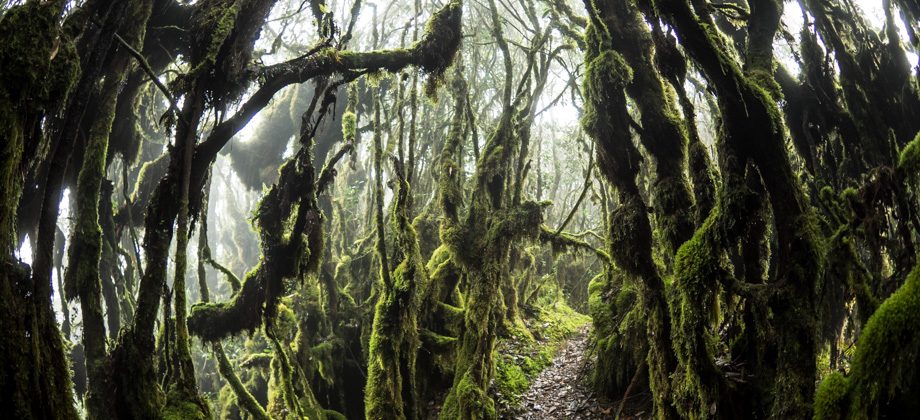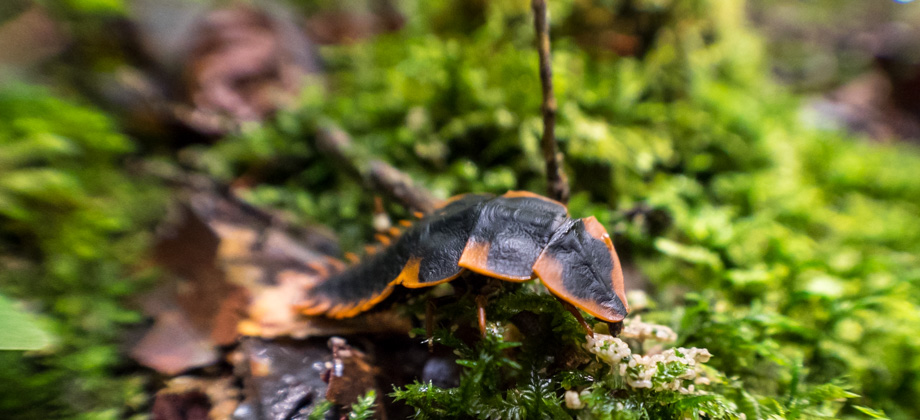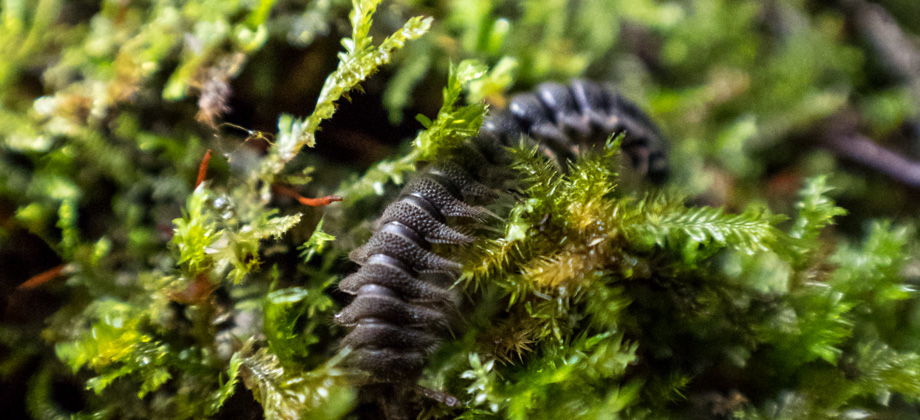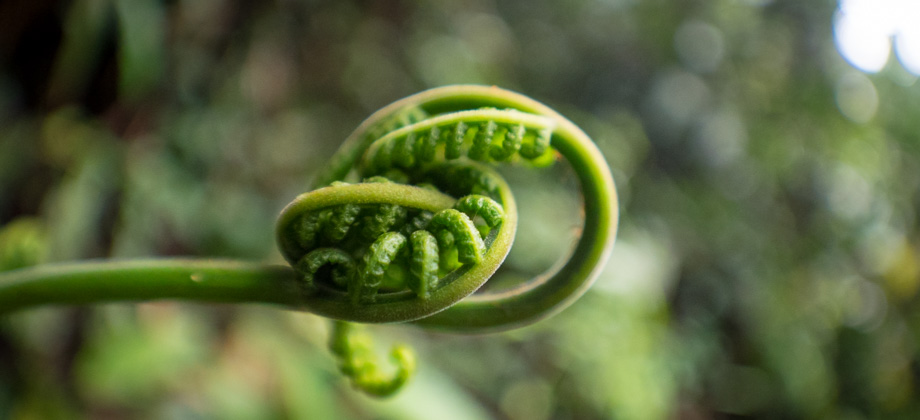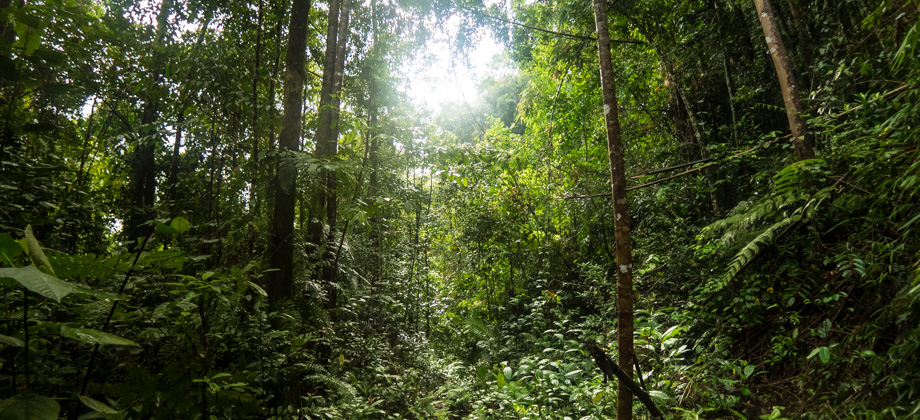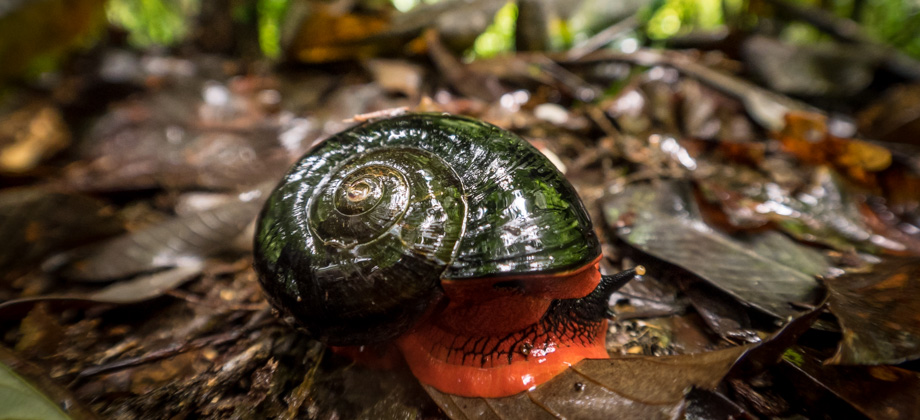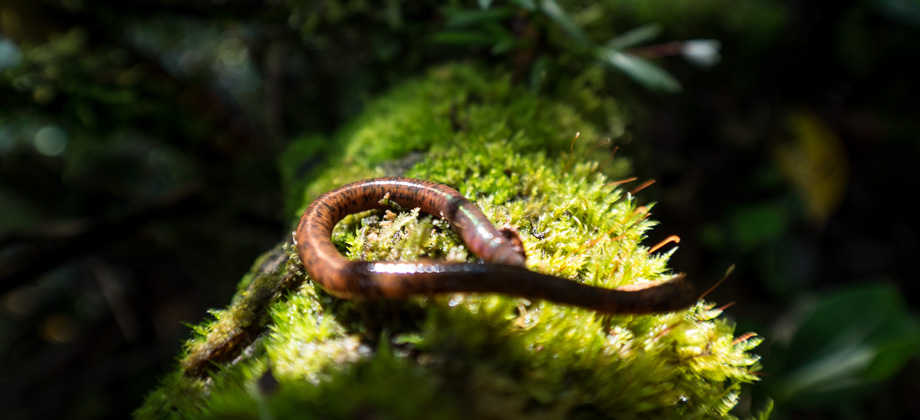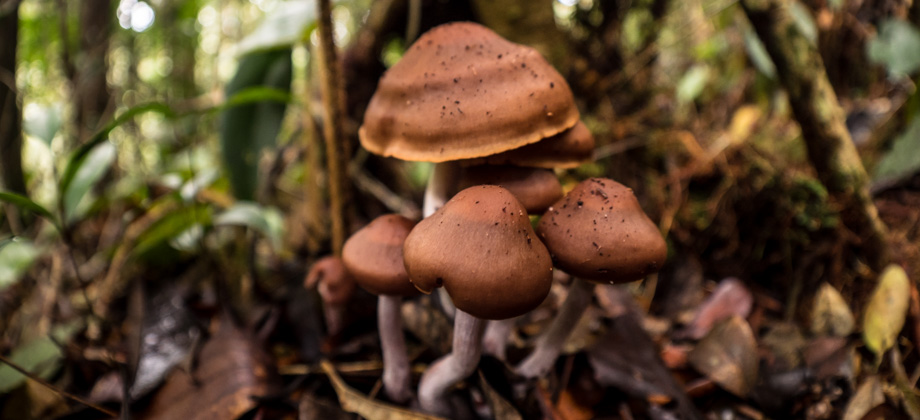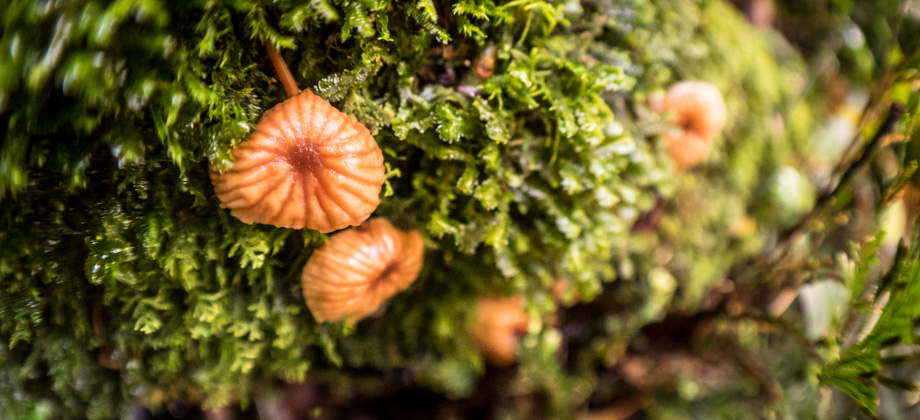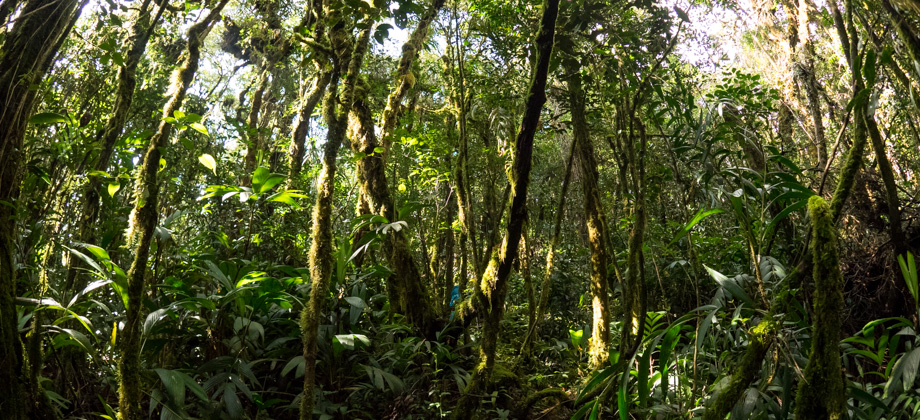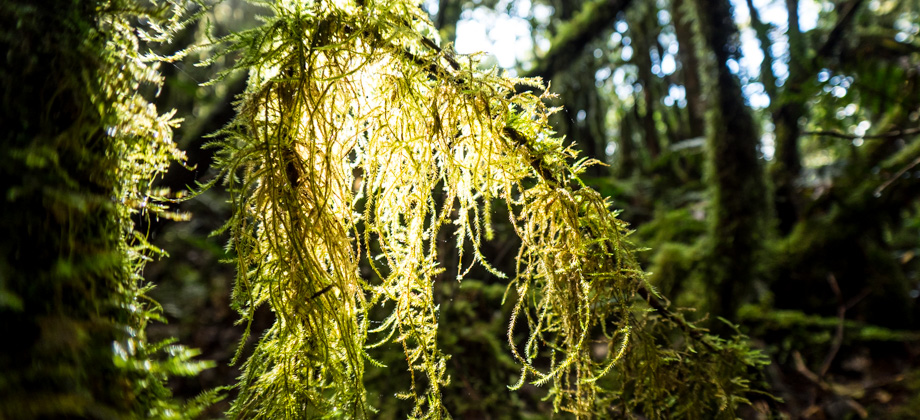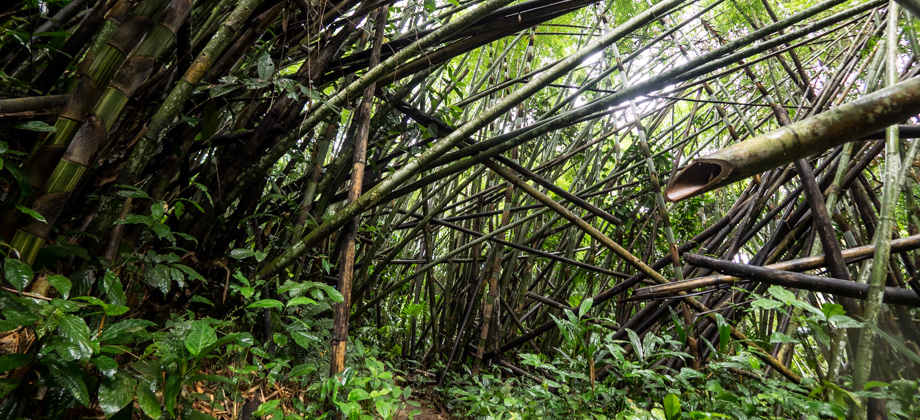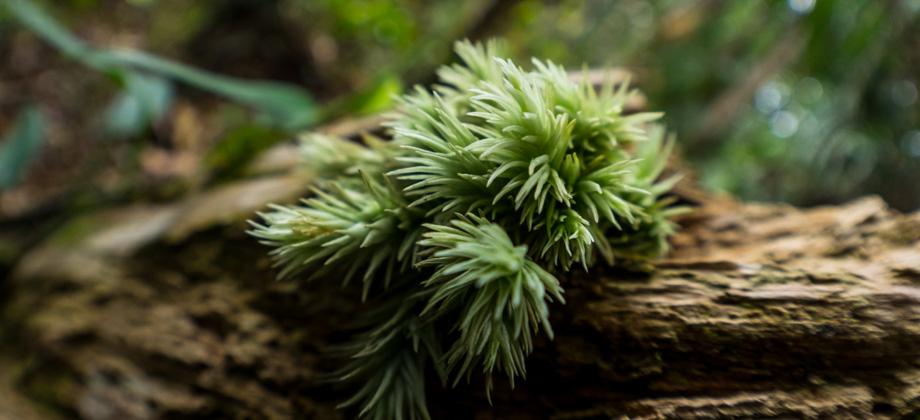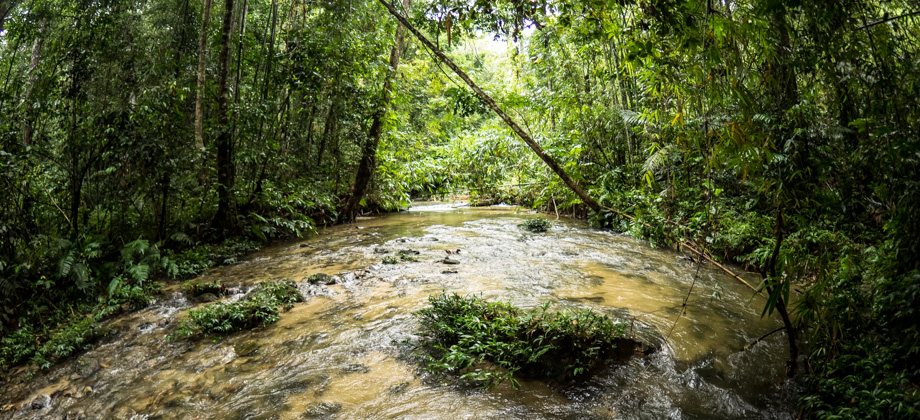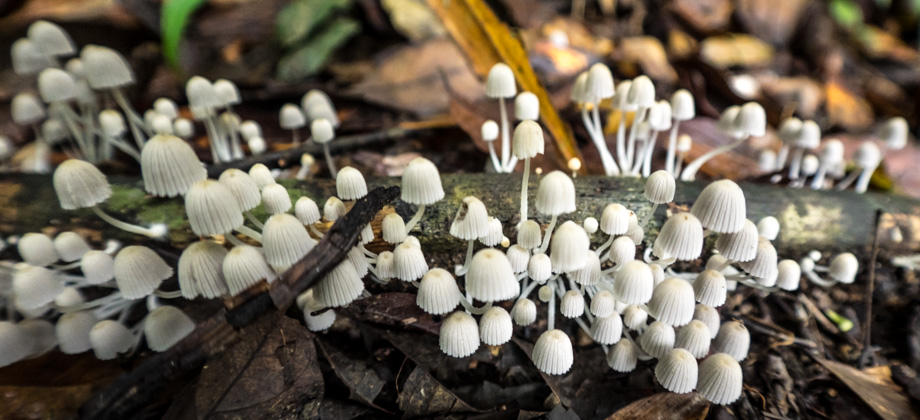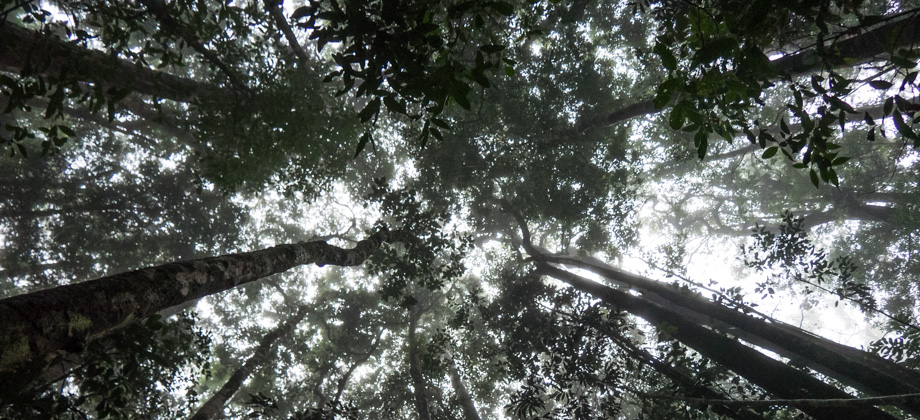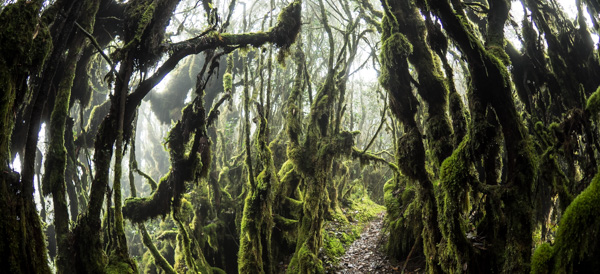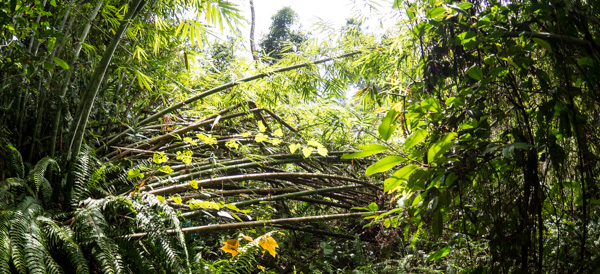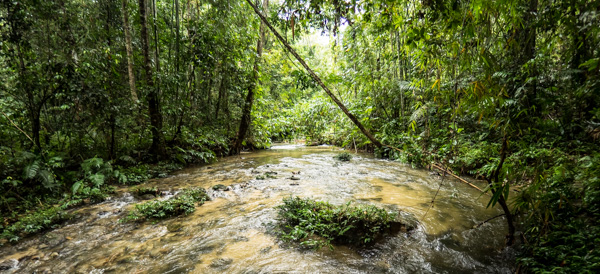GBB (CUS Connection) - Day 1
Wild Ginger
We seemed to enter the domain of wild ginger from then on. The plants came in all shapes and sizes and were so different from one another that untrained eyes would never have supposed that they were even remotely related. Despite this amazing diversity, they were all from the ginger family
(Zingiberaceae), the family whose type genus includes the ginger that almost everyone in the world is familiar with--
Zingiber officinale (Malay: Halia).
One of the most striking species' of wild ginger that we happened upon were the rounded pinecone-like stalks of black gingerwort
(Zingiber spectabile) (Malay: Tepus tanah). The bracts that surrounded the stalks came in a yellow or red hue that depended on the age of the bloom. Occasionally we would even spot a short-lived flower that emerged from one of these bracts. The long yellow stamen stalks and conspicuous bulbils of pendulous globba ginger
(Globba pendula) (Malay: Meroyan Air), a type of wild ginger that shares the same sub-family as gingerworts
(Zingiberoideae), were also scattered along the sides of the trail. Some believe that this ginger can be used to treat stomach complaints and can be used as post-childbirth protective medicine.
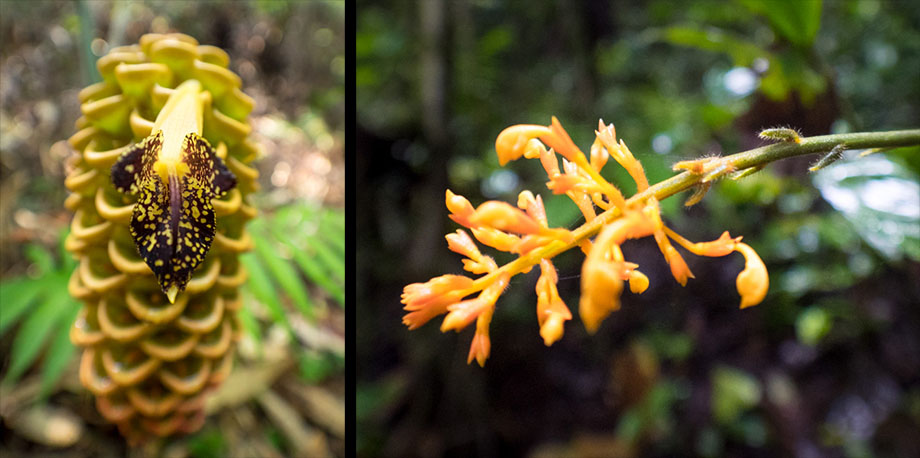 The orchid-like flower of black gingerwort (Zingiber spectabile); the yellow flower of pendulous globba ginger (Globba pendula)
The orchid-like flower of black gingerwort (Zingiber spectabile); the yellow flower of pendulous globba ginger (Globba pendula)
Another wild ginger that we frequently encountered were the strange red bracts of spindle ginger
(Hornstedtia scyphifera). The bracts that we saw were all tightly closed and not a single flower was seen emerging from them. However, all of them were suspended above the ground and were supported by stilt roots.
 The bracts of spindle ginger (Hornstedtia scyphifera) on stilt roots
The bracts of spindle ginger (Hornstedtia scyphifera) on stilt roots
The other red splashes that we saw scattered around the forest floor turned out to be the flowers of earth ginger
(Etlingera coccinea) (Malay: Tuhau), another ginger from the
Alpinioideae sub-family. The name 'coccinea' actually refers to its striking red colour, a colour that normally means that the flower is pollinated by birds. Its long tubular flowers mean that the nectar can only be accessed by birds with long thin beaks, such as those that make up the
Nectariniidae family, namely sunbirds and spiderhunters. If the tubular flowers still prove to be too long for the beaks, some of these birds will simply puncture the base of the flower and sip the nectar from the side instead.
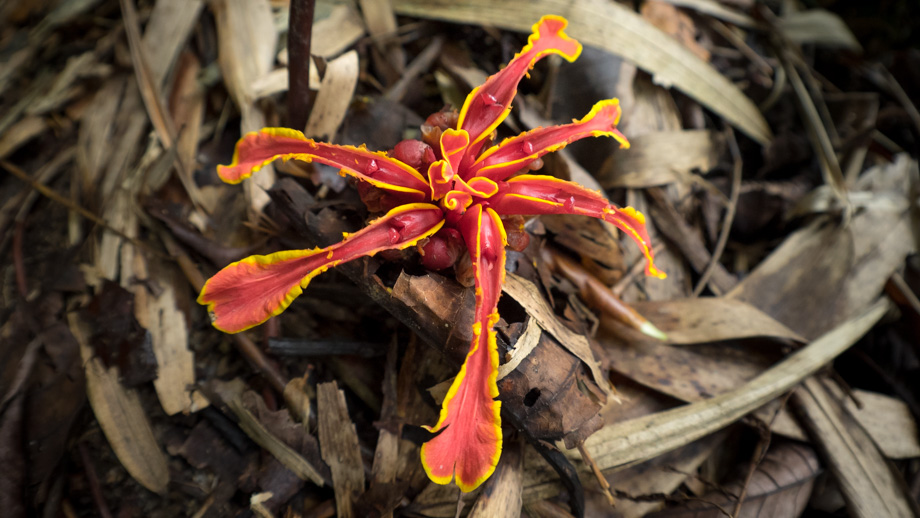 The flower of earth ginger (Etlingera coccinea)
The flower of earth ginger (Etlingera coccinea)
It began to get dark rather quickly not too long after. We carried on nonetheless, with our headlamps standing by, as we were keen to reach the next campsite, which was '
Kem Rata Air'. The colours were quickly fading away as dusk stretched out a blanket of monochrome about us. Simultaneously, a chorus of croaks and chirps from frogs and other nocturnal critters erupted from the vegetation around us, seemingly growing louder in waves and as if coming from everywhere and nowhere at the same time.
It began to rain very heavily just minutes after we reached 'Kem Rata Air', which was much larger than 'Kem Tanpa Nama'. The rain left everything drenched, but we were rather unperturbed by this as we knew that a hot meal of pasta and a good night's rest lay just in store for us--that is, once we had everything set up and had changed into dry clothes!
Suunto Movescount Stats
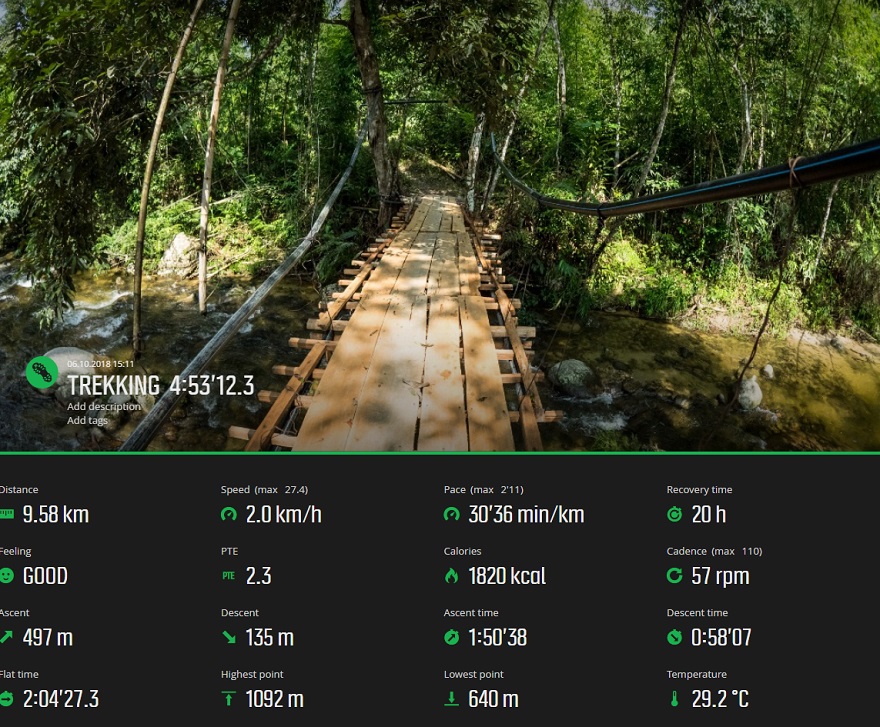
 Download GPX file here (right click and save link as)
Download GPX file here (right click and save link as)




